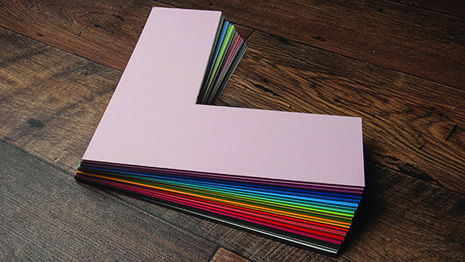
What is a picture mount?
Whether it’s a treasured family photograph, a classic piece of artwork or a print, not only is a high-quality frame essential, but various other components too, including a picture mount.
It’s no use just sticking your item in any old picture frame — if you want it to stand out and compliment your interior, you must think carefully about style and design, and this includes the picture mount you use.
If this term is unfamiliar to you, don’t worry. We’re here to explain what it is, along with the different styles and materials used to create one for your art.
What is a mount in picture framing?
Also known as a mat in the US, Marie-Louise or Passepartout, a picture mount is essentially the border often seen around a picture. Whatever the name, it serves the same purpose: to add some breathing space to a piece of art, draw the viewer’s eye into it and help preserve the piece. There are two distinctive types: float mount and window mount. The former requires a spacer while the latter doesn’t.
One of the biggest reasons for a picture mount is to keep the glass off of the art. Depending on the medium used such as acrylic or oil, placing art directly on the glass can damage the surface of the picture, which is why a picture mount is an important part of the framing process. This allows proper air circulation and reduces the possibility of moisture sticking to the artwork.
How do you mount a picture?
To successfully mount a piece of art, the picture must be aligned and secured within the mount correctly to prevent it from dropping in the future. Archival hinging tape is used for expensive or irreplaceable pieces — this is what we use at Soho Frames. There are different types with varying strength levels; some come with pressure-sensitive self-adhesive and others need the adhesive activated with distilled water. The one we choose depends on the piece. Sellotape or standard frame backing must never be applied as the oils in the tape will damage the artwork.
The mount is acid-free to avoid artwork damage; the same goes for the adhesive used to hold the corners in place. Most artworks are hinged only to the top of the mount to avoid restriction should anything need to be removed from the frame.
What styles can you get?
The single mount tends to use a 1.4mm thick board, and this is generally the simplest and most affordable option available. Whereas the double design consists of two layers of 1.4mm thick board, which provides an inner border, accentuating your print or artwork.
However, you sometimes see high street retailers selling very thin boards in ready-made frames that come with a ‘ready-made mount’. These are usually low-quality and produced from 1.1mm boards. Although some are produced using 1.4mm, the quality of the material sits at the budget end of the scale.
We are very accommodating to our customer’s needs here at Soho Frames, so if the client does not want any tape, even archival, applied to their artwork, then we can float the work on archival mountboard using acid-free acrylic corners. We then place a window mount on top of this (often called a presentation mount) and hinge this to the float mount. This allows the artwork to be removed in exactly the same condition as when it was originally framed.
What material and thickness options are available?
There are many excellent boards available from reputable suppliers that will not damage the artwork. At Soho Frames, we use several types of board— the thinnest is 1.4mm. Made from wood pulp, these picture mounts are acid-neutralised (chemically treated to prevent yellowing or browning) and buffered to ensure that these acids no longer interact with the artwork, which may lead to stains.
The most common type our team works with is archival board in 2mm thickness, which not only protects the art from damage but gives it a noticeable bevel. This really emphasises the picture and provides a quality look.
The highest quality board we use is museum standard that’s made from pure cotton. It’s traditionally used to frame original artwork, fine prints and precious documents by museums. Available in two thicknesses — 4-ply or 8-ply (1.5mm or 3.2mm thick) — it’s absolutely beautiful to work with. We recommend this material above all others for our framing projects.
How do I choose my mount size?
The margin size for picture mounts is down to personal taste and preference, but the idea is to allow enough space so that the artwork doesn’t look pinched. An average size is between 45mm and 85mm overall — you will ‘lose’ around 6mm under the lip of the frame, so the visual frame is always a little less. Very large picture mounts are also available and look fabulous when finished.
The size you pick ultimately depends on your desired look and style for your picture. For example, if you have an A4 piece, this can be framed exactly how it is without a mount, or we can create one that suits it perfectly. If you decide on the latter, you’ll need a frame larger than A4 to accommodate the mount. Here at Soho Frames, we can cut mounts to size, but bear in mind anything larger than 1200mm x 900mm will require extra production time.
If you’d like some additional guidance on framing and choosing a suitable mount for your art, don’t hesitate to get in touch with us. We can design and build many different frames for our client’s, and your input is invaluable.

